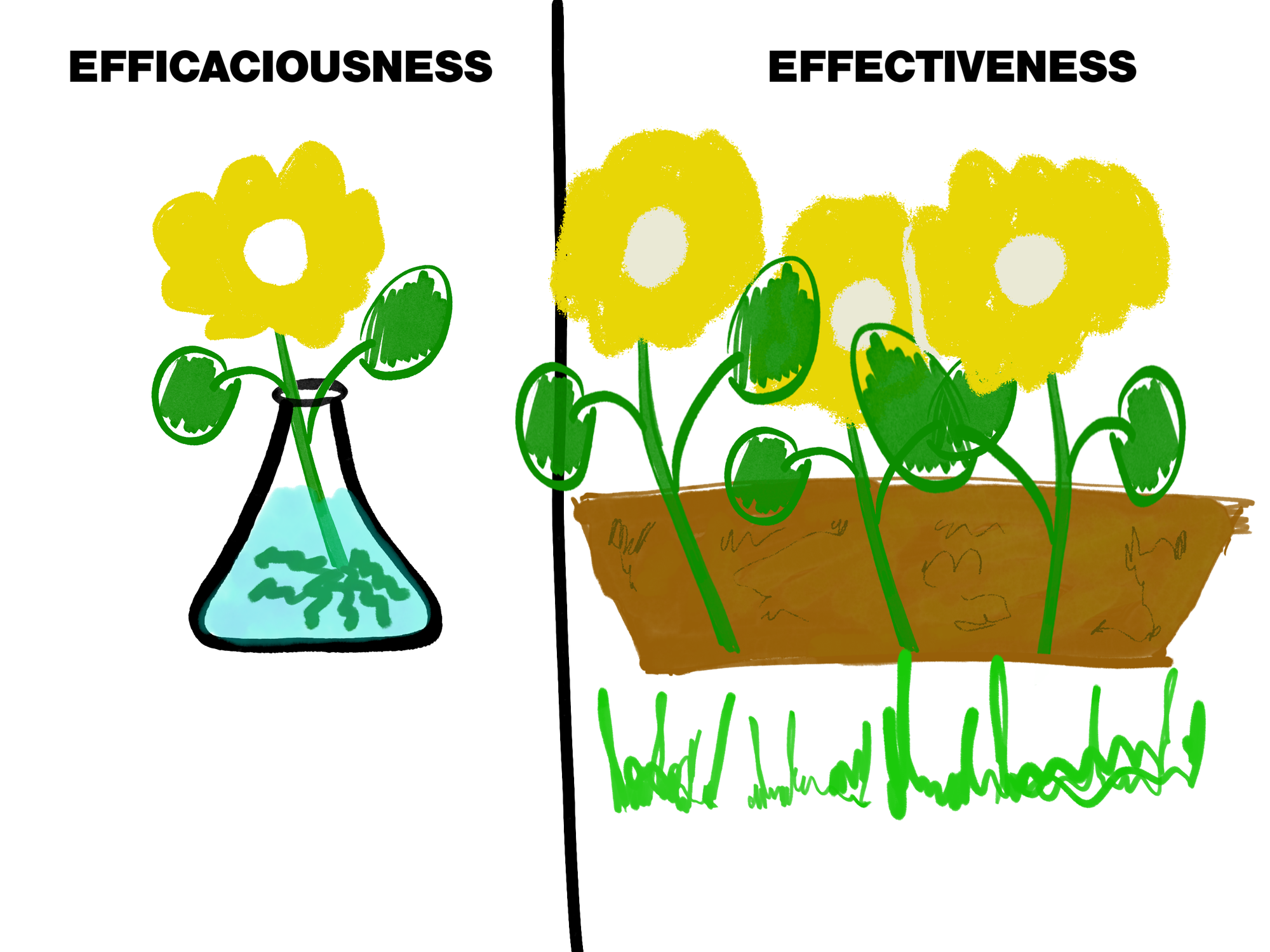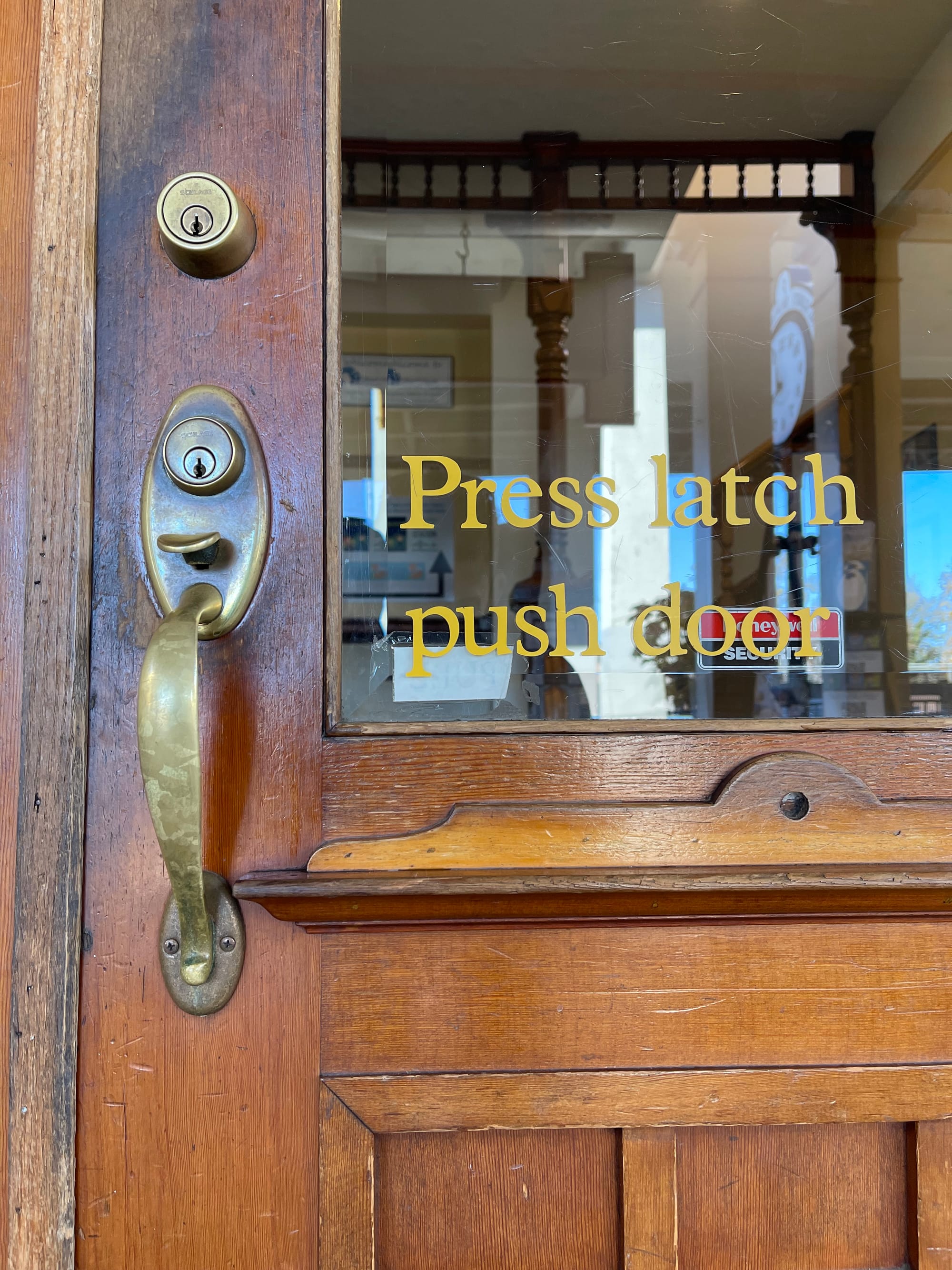The Role of Human Factors in Creating Effective Solutions
Explore the key to success in innovation: the difference between efficacy and effectiveness. Learn about human-centered design and inclusivity in turning great ideas into real-world solutions with inspiring examples from OXO and more.

The Importance of Being Effective, Not Just Efficacious
As creators and innovators, we strive to make positive change in the world by developing ideas and solutions for the problems that cause us and others pain or frustration. Many times, though, we get stuck in language that confuses the end with the means. What’s the difference between efficacy and effectiveness? We must understand the distinction to ensure our efforts translate into real-world success and bridge the gap between promise and effect.
Efficacy refers to the potential of something to do what it's supposed to do in controlled environments. It's about how well something works in theory. For example, how well does a medication work in laboratory testing? On the other hand, effectiveness is about how well something performs its intended function in the real world, making a tangible difference in people's lives. In our example, this is how well the medication helps the people it’s prescribed to, considering the messiness of human behavior.

While we often focus on efficacy and celebrate the promise of our ideas, we must not forget the ultimate goal: real-world change. Language plays a decisive role in shaping our perception, but it can be misleading without a clear understanding of efficacy and effectiveness.
We must embrace the human element to bridge the gap between efficacy and effectiveness. Human-centered design, empathy, and understanding the needs of the people we’re creating for are crucial for designing solutions that are not only efficacious on paper but genuinely effective in practice.
Inclusivity is also crucial to achieving effectiveness. By bringing diverse perspectives to the table and addressing the needs of a wide range of individuals, we can maximize the impact of our ideas.
In the following sections, we will explore the power of language and the role of human factors and provide real-life examples that illustrate the importance of effectiveness in innovation.
The Human Element: Bridging the Gap between Promise and Effect
In the quest for innovation and progress, getting lost in the allure of ideas and promises is often easy. We celebrate the potential of our creations, envisioning a future where they revolutionize the world. However, it is crucial to remember that true success lies not in the realm of possibilities but in the realm of reality. And to navigate this path from promise to effect, we must embrace the human element.
Human behavior and preferences can be complex and unpredictable. Failing to account for these intricacies can lead to unexpected results and missed opportunities. It is here that the principles of human-centered design come into play. By placing the needs and experiences of the people using our solutions at the forefront, we can create offerings that genuinely resonate and make a meaningful difference.
However, inclusivity goes beyond design principles alone. It is about fostering an environment that welcomes diverse perspectives and experiences. When we bring together individuals from different backgrounds and walks of life, we tap into a wellspring of creativity and knowledge. The more voices we include in the conversation, the more effective our solutions become. Inclusivity becomes the catalyst for innovation, propelling us towards solutions that address the needs of a wider audience and create a lasting impact.
Inclusive Design and Effective Innovation
In the 1980s, Sam Farber noticed his wife, Betsey, had difficulty peeling vegetables with their peeler. She had arthritis, and the handle on the thin metal peeler was challenging to hold. Betsey, who had a background in architecture and design, asked if Sam could help figure out how to make a better peeler. Sam began exploring various handle grips and configurations. He took handles off numerous other household objects: shovels, screwdrivers, bicycle handles, and started testing them along the way (1).

In 1990, they launched OXO, a line of kitchen tools that revolutionized how people prepared food. The large, rounded rubber handles were like nothing else made for the home kitchen. Their tools were designed to help people with arthritis better grip them, and in doing so, they happened to make life better for everyone. Along the way, the American Arthritis Foundation recognized OXO, and OXO put the endorsement on its packaging. What they realized, though, was that the endorsement stigmatized their product. Inclusive design meant it was better for everyone, and the endorsement may have led to someone with arthritis feeling shame for purchasing the product “meant” for a person with arthritis - they could feel othered. Similarly, someone without arthritis may have shied away from a product meant for “someone with a disability.” So they removed the endorsement, and as they explain, “We realized someone in need would instantly realize this was better for them, anyway.”
Or take Carol Reiley, a scientist and business executive who studies robotics and artificial intelligence. As a leader in the surgical robotics space, Reiley was developing voice-controlled surgical robotics, and the software she was using was having a hard time understanding her voice, limiting the ability of the machine to operate correctly. In trying to understand the problem, she realized the software had been developed and tested with only male voices. It was easier and cheaper for the developers and engineers to use their voices in testing the software, and in doing so, they created an unusable product for anyone who didn’t sound like them (2).
“Responsible creators must accept that they will exclude people, unless they work to prevent it.” - Scott Berkun
Effective solutions work well for people in the real world. We operate within messy systems of human behavior: communication, education, health care, transportation, etc. Nothing is created in a vacuum, and everything depends on the interaction of inputs, outputs, and variables. When we develop ideas or objects that seek to make life better for as many people as possible, we narrow the gap between its efficacy and effectiveness. While we should care more about how effective a solution is, we also shouldn’t devalue efficacy because it serves as its starting point. Here’s how Sam and Betsey of OXO think about this:
“The reason the peeler works so well is because the blade is really sharp. If you put a dull blade on our peeler, it won’t peel any better than our peeler. If you put a sharp blade on a stick, it will peel was well as our peeler.”
In other words, the peeler was first made highly efficacious by using a very sharp blade. Only then did they begin to translate its efficacy to effectiveness by its design language. Harnessing empathy for people with arthritis, prototyping new handles, reiterating, and seeking out the end user allowed them to create an inclusive and more effective form. How might we make our bridge between efficacy and effectiveness?
The Power of Design Principles in Creating Effective Solutions
As a human-centered designer, understanding and applying design principles is essential in creating solutions that truly make a difference. These design heuristics provide a framework for crafting effective designs that align with the needs and experiences of those who use them (2).
Continuity: By ensuring that elements of a design flow seamlessly from one to the next, we create unity and coherence. Continuity allows users to navigate a product or system effortlessly, promoting a sense of familiarity and ease of use. It enables users to focus on their goals without being distracted by inconsistencies or disjointed experiences.
For example, a website uses the same menu structures for navigation throughout the site or the gestures used to interact with a device like a cellphone. A website or device is easier to understand and navigate if there's consistency when using it.
Discoverability: Making it easy for users to find and use their desired features is crucial for effective design. Discoverability helps users quickly understand how to interact with a solution and find the functionalities that serve their needs. When users can effortlessly discover and use features, they experience a sense of empowerment and engagement.
Perhaps the most basic example is a door. How many times have you tried to walk out of a store or building, only to grab the handle and pull and realize that the door was meant to be pushed? The handle provided what designers call an "affordance" - it afforded you the ability to pull on the door, which signals our brains to pull (3). It's not that you don't know how to use a door; it's simply a case of poor design.

Consistency: Consistency across a product or system reduces confusion and increases efficiency. We create a cohesive and intuitive experience by employing similar design elements throughout. Consistency in visual language, interaction patterns, and terminology helps users build mental models and easily navigate. It minimizes the cognitive load required to understand and interact with a solution, allowing users to focus on their tasks and goals.
This might look like having wayfinding artifacts within a hospital using the same symbols, colors, or vocabulary to help patients, staff, and visitors find their way through large buildings.
Clarity: Designs should be easy to understand and use without unnecessary complexity or confusion. Clarity ensures that users can grasp the purpose and functionality of a solution with minimal effort. Clear communication, intuitive layouts, and well-structured information enable users to navigate, make informed decisions, and accomplish their objectives. When a design is clear, users feel confident and in control, leading to a positive user experience.
In academia, we often encounter poor visual design in lectures and presentations. Many times, slides lack visual hierarchy, contain overly complex graphics, and lack the necessary clarity for effective communication. This is often due to the presenter creating the slides primarily for their use during the talk without considering the audience's needs.
Conclusion
The distinction between efficacy and effectiveness holds the key to true success. While efficacy focuses on the potential of an idea or solution in controlled environments, effectiveness measures its real-world effect and ability to make a tangible difference in people’s lives.
We must embrace the human element to bridge the gap between potential and effect. Human-centered design and inclusivity are essential for creating solutions that are efficacious on paper and genuinely effective in practice. By understanding the needs and experiences of the people using our solutions, we can tailor our designs to resonate and make a lasting difference.
As we embark on the journey of bridging the gap between potential and effect, let us remember the importance of the human element. Let us strive for empathy, understanding, and inclusivity. By doing so, we unlock the potential to create solutions that dazzle on paper and truly resonate with the people they are meant to serve.
References
- Wilson, M. (2018). The untold story of the vegetable peeler that changed the world. Fast Company. Retrieved December 11, 2023, from https://www.fastcompany.com/90239156/the-untold-story-of-the-vegetable-peeler-that-changed-the-world
- Berkun, S. (2020). How Design makes the world. Berkun Media, LLC.
- Norman, D. A. (2013). The Design of Everyday Things. Basic Books.
